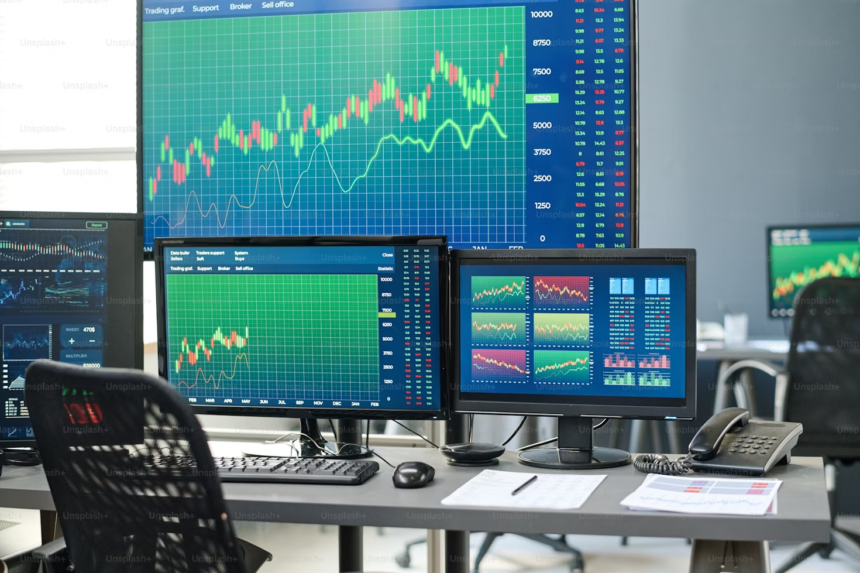Key Takeaways
- Trade finance is crucial for facilitating seamless international commerce and ensuring the stability of global supply chains.
- Modern financial solutions help address the unique challenges faced by small businesses, shrinking the trade finance gap.
- Technological advancements and sustainability efforts are redefining the future of trade finance.
Understanding Trade Finance
In today’s globalized market, trade finance serves as the backbone of international commerce, facilitating the smooth movement of goods and services across borders. Without robust trade finance mechanisms, even routine transactions could be fraught with financial uncertainty, delay, and risk. Trade finance relies on a suite of financial instruments, including letters of credit, export credits, and insurance, that create trust and facilitate transactions between buyers and sellers in different countries. These instruments act as guarantees, helping exporters secure payment for their products, while importers can be confident that goods will be delivered as promised.
The complexity and sheer volume of global trade transactions mean that trade finance impacts nearly every stage of the product journey, from raw materials to finished goods. These services aren’t just limited to multinational corporations; small and medium-sized enterprises (SMEs) stand to benefit immensely by gaining access to new markets, safeguarding their cash flow, and reducing exposure to non-payment or logistical hiccups. With the support of trade finance solution providers, businesses can access tailored financial tools, expert risk assessments, and digital platforms that streamline cross-border transactions. The involvement of these experienced partners plays a vital role in helping organizations of all sizes thrive in the fast-paced world of international business.
Bridging the Trade Finance Gap
Despite its critical role, trade finance is not equally accessible to all businesses, leading to what experts term the “trade finance gap.” This gap refers to the shortfall between the finance demanded by businesses for cross-border transactions and the amount that lenders are able or willing to provide. SMEs and businesses in emerging markets are disproportionately affected by this shortage, often due to stricter lending standards, perceived credit risk, a lack of credit history, or insufficient collateral. According to the World Trade Organization (WTO), this constraint not only stifles the growth of small firms but also slows global economic progress by excluding potentially vibrant businesses from the international supply chain ecosystem.
Addressing this gap means rethinking how financing is offered and removing some of the traditional barriers that have prevented smaller players from participating in the market. Solutions such as innovative lending models, digital verification of creditworthiness, and wider adoption of fintech platforms are empowering more businesses to participate in international markets than ever before. Additionally, public and private sector collaboration is essential; government-backed loan guarantees and streamlined regulatory policies can make trade finance options more readily available. By narrowing the trade finance gap, more entrepreneurs, women-owned enterprises, and startups can flourish, driving more inclusive and equitable growth worldwide.
Enhancing Supply Chain Resilience
Global supply chains are becoming increasingly complex and susceptible to disruption, whether due to global crises, geopolitical tension, natural disasters, or rapid policy shifts. Trade finance provides the essential liquidity that keeps supply chains functional even in the face of uncertainty. It enables companies to secure working capital, pay suppliers on time, and maintain operations during fluctuations in demand or delays. When suppliers and buyers know that financing is available, they are more likely to uphold agreements, invest in long-term relationships, and confidently plan for growth.
This resilience is crucial for enterprises looking to remain competitive as disruptions become more common. Companies reliant on a steady supply of components can rely on trade finance as a bridge to weather delays in shipping or payments, ensuring that customers still receive their products without interruption. Consequently, trade finance acts as a stabilizing force, helping organizations avoid business interruption, protect their reputation, and foster trust across global supply networks.
Technological Innovations in Trade Finance
The face of trade finance is changing rapidly with the advent of powerful digital technologies. Traditional methods that relied heavily on paperwork and manual validation are being replaced by solutions that emphasize automation, data-driven decision making, and real-time analytics. Key among these are blockchain technology, artificial intelligence (AI), and the development of integrated digital platforms.
Blockchain & Digital Platforms
Blockchain technology is revolutionizing trade finance by enabling secure, transparent, and tamper-proof documentation of every stage of a trade transaction. This reduces opportunities for fraud, prevents duplicate financing, and dramatically cuts the time spent reconciling records among multiple parties. Digital platforms offer a collaborative environment where buyers, sellers, shippers, insurers, and financiers can interact seamlessly. These platforms accelerate document sharing, approval processes, and trade settlement, offering an end-to-end solution that was previously out of reach for most small businesses.
Artificial Intelligence
AI is another game changer, with systems that automate labor-intensive tasks such as risk estimation, customer screening, and compliance checks. AI algorithms can process massive volumes of trade and financial data in seconds, extracting insights that humans would take days or weeks to generate. This efficiency not only reduces the cost of providing trade finance but also helps lenders extend credit more confidently to underserved businesses.
Promoting Sustainable Supply Chains
As businesses and consumers demand more environmentally and socially responsible practices, trade finance is helping shape a more sustainable globalization. Financial institutions are increasingly designing products that reward companies for meeting Environmental, Social, and Governance (ESG) targets. For example, businesses that reduce their carbon footprint, engage in ethical labor practices, or commit to sustainable material sourcing may be eligible for preferential interest rates or access to specific green loans.
This recalibration of trade finance toward sustainability supports the broader shift toward more responsible and future-ready supply chains. By aligning financial incentives with efforts that benefit communities and the planet, trade finance now plays a pivotal role in encouraging companies to go beyond compliance and actively contribute to the well-being of people and the environment. As momentum for sustainability grows, it is expected that a greater portion of global trade finance will be tied to achieving measurable ESG objectives.
Supporting SMEs in Global Trade
Small and medium-sized enterprises are dynamic engines of economic growth, innovation, and job creation worldwide, yet they often struggle to access traditional forms of trade finance. The perception of higher risk, lack of extensive operating history, and limited physical collateral make it challenging for SMEs to meet the stringent requirements of traditional lenders. Custom-designed trade finance solutions, such as invoice factoring, supply chain finance, and online micro-lending, are making it increasingly possible for these businesses to compete on a global stage. In addition, digital onboarding, e-KYC (Know Your Customer) processes, and simplified paperwork enable SMEs to enter new export markets more quickly and with fewer resource constraints. As the World Economic Forum highlights, supporting SMEs is essential not just for their survival but also for ensuring global trade stability and fostering a more inclusive economy. This democratization of trade finance is helping to diversify local economies while creating pathways for smaller businesses to participate in—and benefit from—international commerce.
Future Outlook
Looking ahead, the importance of trade finance is expected to accelerate as global supply chains become increasingly complex and interdependent. Ongoing advancements in fintech, digital tools, and sustainability-linked finance will continue to make trade finance more accessible, efficient, and equitable. The rise of artificial intelligence, blockchain, machine learning, and integrated digital platforms promises to remove barriers that have historically limited smaller players. Meanwhile, the shift towards supporting sustainable practices will ensure that businesses are not only profitable but also responsible global citizens.
More companies are recognizing the transformative power of modern trade finance solutions. The global economy is poised for greater resilience, inclusivity, and dynamic growth in the decades to come. As trade finance evolves, it will continue to be a crucial pillar supporting the future of global commerce and sustainable supply chain networks.














